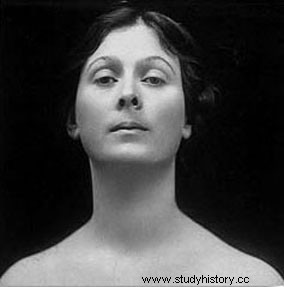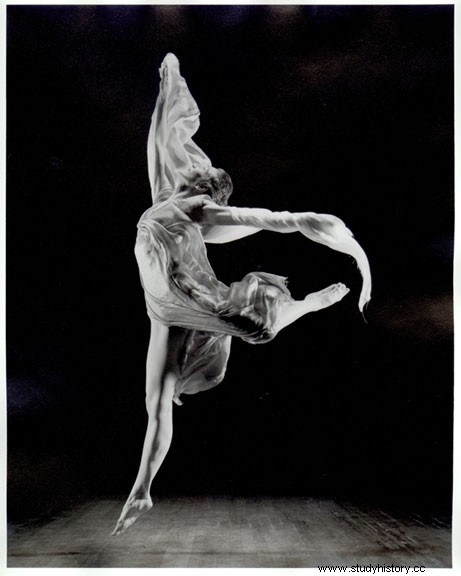Isadora Duncan (1877 – 1927) was an American dancer. Very inspired by Greek antiquity and spirituality, it laid the foundations of modern European dance.
The start of a dancing career
 The fourth child of Mary Dora Gray and Charles Duncan, Isadora was born on May 26, 1877 in San Francisco. Her parents divorced when she was three, and Mary Dora took her children with her to Oakland, California; she worked there as a pianist and music teacher. Isadora enters the school but leaves it quickly because of her independent character. She and her sister start giving dance lessons to neighborhood children to help their mother. From these years of teaching, her originality and her imagination are expressed in dance.
The fourth child of Mary Dora Gray and Charles Duncan, Isadora was born on May 26, 1877 in San Francisco. Her parents divorced when she was three, and Mary Dora took her children with her to Oakland, California; she worked there as a pianist and music teacher. Isadora enters the school but leaves it quickly because of her independent character. She and her sister start giving dance lessons to neighborhood children to help their mother. From these years of teaching, her originality and her imagination are expressed in dance.
In 1895, Isadora briefly embarked on the theater in New York, with the Augustin Daly company, but the experience quickly disappointed her. In 1899, she left to work as a dancer in London. At the British Museum, she discovers Greek Antiquity which will inspire her all her life. In 1900, she moved to Paris and was inspired by the Louvre and the Universal Exhibition.
Rejection of traditional ballet
In Paris, Isadora Duncan quickly became successful and, in 1902, went on a tour of Europe. Rejecting the codes of traditional ballet, Isadora draws her inspiration from emotion, the body and improvisation. She frees herself from the tutu, from the pointe shoes, and dances barefoot. Many rallied to her philosophy and, in 1904, she opened her first school. Performance and teaching will remain the two pillars of his artistic life. In 1906, she had a daughter, Deirdre. In 1910, a son, Patrick. Tragically, the two children drowned in the Seine on April 19, 1913, following a car accident.
 Popular, Isadora influenced many artists in their art, such as Antoine Bourdelle or Auguste Rodin. In 1913, his portrait was engraved on the bas-reliefs of the Théâtre des Champs-Elysées. The same year, she founded a second dance school in Meudon. In 1922, eager to support the new Soviet Union, she moved briefly to Moscow where she founded another school before returning to Paris. The same year, she married the Russian poet Sergei Yesenin. Her husband had alcohol and anger issues and their rowdy affair ended the following year. Bisexual, Isadora is also credited with relationships with the poet Mercedes de Acosta and the writer Natalie Clifford Barney.
Popular, Isadora influenced many artists in their art, such as Antoine Bourdelle or Auguste Rodin. In 1913, his portrait was engraved on the bas-reliefs of the Théâtre des Champs-Elysées. The same year, she founded a second dance school in Meudon. In 1922, eager to support the new Soviet Union, she moved briefly to Moscow where she founded another school before returning to Paris. The same year, she married the Russian poet Sergei Yesenin. Her husband had alcohol and anger issues and their rowdy affair ended the following year. Bisexual, Isadora is also credited with relationships with the poet Mercedes de Acosta and the writer Natalie Clifford Barney.
On September 14, 1927, in Nice, Isadora Duncan died tragically, strangled by her scarf which got caught in the spokes of a car wheel. After his death, his students continued his work and teaching.
